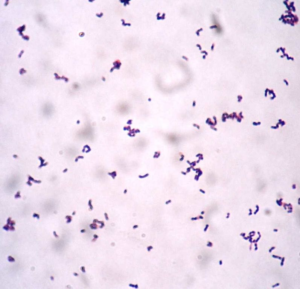Pneumococcus - gallery
Streptococcus pneumoniae or pneumococci are gram-positive cocci in pairs, which may be capsulated.
Colonies are 1-2mm, α-haemolytic and may appear as ‘draughtsman’ colonies (due to autolysis of the organisms). If incubated in anaerobic conditions, the colonies may appear larger and more mucoid.
It is, like other Streptococcus spp., catalase-negative.
Traditionally, a few of the properties of the pneumococcus were exploited to help identify. They are –
Optochin susceptibility – Pneumococcus is susceptible to optochin (ethylhydrocupreine hydrochloride), while other alpha-haemolytic Streptococci are not. However, this test cannot be taken as a confirmatory test. Both optochin-resistant pneumococcus and alpha haemolytic Streptococcus (S. oralis, S. mitis and S. pseudopneumoniae) strains that are optochin susceptible have been reported.
A zone size of ≥14 mm diameter is considered susceptible.
Bile solubility could be considered a confirmatory test as it differentiates pneumococci from other alpha haemolytic Streptococcus. S. pneumoniae is soluble in 10% bile salts, S. pseudopneumoniae is partially soluble, and other α-haemolytic streptococci are insoluble.
Quellung/ Neufeld reaction – capsular polysaccharide of the pneumococci binds with the type-specific antibody contained in the typing antiserum – the reaction changes the refractive index of the capsule so that it appears “swollen” and more visible.
Latex agglutination – commercial latex agglutination test can be used to identify pneumococcus.
Note:
One limitation of MALDI-TOF is that it cannot readily distinguish between Streptococcus pneumoniae and other members of the Streptococcus mitis group.
Other molecular methods – PCR, PFGE, MLST, etc. can be used for identification/epidemiological purposes.


